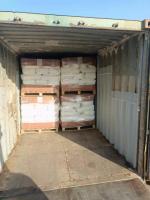An anionic polyacrylamide (APAM) with 70% hydrolysis degree and high molecular weight (typically >10 million Da) is a powerful flocculant and viscosifier designed to perform in high-salinity, high-hardness, or challenging solid-liquid separation environments. Its main applications span a variety of industries, with particular strength in enhanced oil recovery (EOR), mineral processing, industrial wastewater treatment, and tailings dewatering.
1. Enhanced Oil Recovery (EOR) — Polymer Flooding
This is the primary industrial application of high-MW, 70% hydrolyzed APAM.
➤ Function:
Used as a mobility control agent in polymer flooding — a tertiary oil recovery method — APAM increases the viscosity of injected water to improve sweep efficiency and displace residual oil trapped in porous rock.
➤ Why it excels:
-
High hydrolysis degree (70%) = strong anionic charge, ideal for adsorption to reservoir rock and interaction with oil/water interfaces.
-
High MW = excellent viscosity generation at low concentrations (500–2,000 ppm).
-
Salt/hardness tolerance = suitable for use in brackish, saline, or formation water.
-
Thermal stability = effective in reservoirs with temperatures up to ~70–80°C.
2. Industrial and Municipal Wastewater Treatment
➤ Application:
Acts as a flocculant for separating suspended solids, heavy metals, or organic colloids from wastewater.
➤ Ideal for:
-
Refineries, chemical plants, and metallurgical effluents
-
High TDS water (cooling tower blowdown, RO reject)
-
Municipal wastewater containing high levels of inorganic particulates
➤ Benefits:
-
Promotes large, fast-settling flocs
-
Functions in highly ionic waters where low-hydrolysis APAMs would lose effectiveness
-
Reduces sludge volume and improves dewatering performance
3. Mining and Mineral Processing
➤ Use Cases:
-
Clarification of process water
-
Flocculation in tailings thickening
-
Dewatering of fine clays, silts, or mine tailings
-
Water recycling and reuse in closed-loop circuits
➤ Specific minerals:
-
Phosphate, iron ore, copper, bauxite/alumina
-
Especially suited to high-salinity slurry environments (e.g. seawater flotation processes)
4. Sludge Dewatering
➤ Use:
Pre-conditioning sludge in belt presses, centrifuges, or screw presses.
➤ Suitable for:
-
Industrial sludge (from chemical, pulp & paper, dyeing industries)
-
Saline/brackish sludge streams
➤ Role:
5. Agriculture & Soil Conditioning (Limited Use)
In some cases, this polymer may be used in irrigation water treatment or soil erosion control, particularly in highly alkaline or saline soils where its stability is an advantage.
Summary Table
|
Application |
Role |
Key Benefit |
|
Enhanced Oil Recovery (EOR) |
Mobility control agent (polymer flooding) |
Improves oil displacement in harsh reservoir water |
|
Industrial Wastewater Treatment |
Flocculant for solid-liquid separation |
Stable in high TDS and hardness |
|
Mining / Tailings Management |
Clarification, thickening, dewatering |
Performs under extreme salinity |
|
Sludge Dewatering |
Flocculant aid for mechanical separation |
Increases dryness and throughput |
|
Agriculture (rare) |
Soil/water conditioner |
Stabilizes infiltration, prevents erosion |
Why High Hydrolysis and MW Matter:
-
70% hydrolysis → Strong negative charge allows better floc formation with positively charged particles and metal ions.
-
High molecular weight → Enables the long polymer chains to act as bridges between particles, forming larger and faster-settling flocs.

